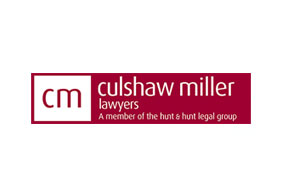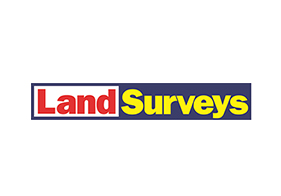These days, conducting business in Perth involves more than just creating a website and letting it function on its own. You want to know what works and what doesn’t, as well as where your visitors are coming from.
The way we track website data is evolving faster than Perth’s weather, which has left the majority of business owners baffled.
If you’ve been using the same Google Analytics setup since 2019, you might be overlooking crucial data. Even worse, you might be making business decisions on incomplete data.
That’s where knowing the difference between server-side tracking vs client-side tracking is key to your revenue.
What Actually Happens When Someone Visits Your Website?
Let’s start with the basics, because honestly, most business owners I speak with have never had this explained properly. When someone visits your website, a significant amount of data collection occurs in the background. The question is: where is that data being processed?
Client-side tracking
Most Perth businesses are now using client-side tracking without even realising it. It’s simple: Whenever anyone goes to your website, their browser (in this case the “client”) executes small bits of code known as scripts. These scripts learn about your visitor: what they viewed, how long they stayed, and if they filled out your contact form.
This process all takes place directly in the visitor’s browser before it is sent to Google Analytics or any other tracking tool you are using. Imagine having a receptionist seated in your office lobby, asking each visitor to complete a form before allowing them to meet with you. So this procedure works; however, what if your visitor decides they don’t want to fill out the form? What happens if they provide false information on the form? You are going to get imperfect data.”
Server-side tracking
On the other hand, it’s as if you had that same receptionist, only it’s taking notes without your asking the visitor to do anything. The data is collected and processed on your server, and only then is it transmitted to your analytics solution. Well, there isn’t all that much a visitor can say.
The Client-Side Reality Check
Here’s what most Perth business owners don’t realise about their current setup: If you’re using standard Google Analytics (which, let’s be honest, you probably are), you’re dealing with client-side tracking. And there are some serious limitations you need to know about.
The main issues affecting your data right now:
- Ad blocker epidemic: About 30% of internet users have ad blockers installed, and that number jumps higher in certain demographics. Your tracking script gets blocked faster than a spam email, meaning you’re potentially missing data from a third of your visitors.
- Browser privacy defaults: Safari automatically blocks third-party tracking cookies, Chrome is following suit, and Firefox has been doing it for years. Your visitors aren’t deliberately trying to mess with your data; their browsers are doing it for them as default settings.
- Attribution chaos: If you’re running Google Ads (and if you’re working with a decent digital agency, you should be), client-side tracking means attribution data becomes increasingly unreliable. You might be spending money on keywords that look like they’re not working when actually they are.
- Budget misallocation: Even worse, you might be throwing budget at campaigns that genuinely aren’t delivering results, but your tracking data suggests they’re performing well.
This is a business issue that is costing Perth companies actual money on a daily basis, not just a technical one.
Why Server-Side Tracking Matters More Than Ever
Server-side Google Analytics setup is becoming the gold standard, and there are some compelling reasons why Perth businesses should care about this shift.
Data Accuracy
Because the tracking happens on your server rather than in the visitor’s browser, you’re not at the mercy of ad blockers, privacy settings, or JavaScript being disabled. You get a much clearer picture of what’s actually happening on your website.
Page Speed Improvements
Instead of loading multiple tracking scripts in the visitor’s browser (which slows down your site), you’re handling everything server-side. Faster loading times mean a better user experience, which Google rewards with higher search rankings. It’s a win-win.
Future-Proofing
As privacy regulations get stricter and browsers become more protective of user data, server-side tracking puts you ahead of the curve. You’re not dependent on third-party cookies, which are being phased out anyway.
For website tracking solutions, Perth businesses can rely on long-term, server-side solutions, which look like the smart bet. But it’s not all sunshine and rainbows.
Which tracking method works best for your Perth business? Find out and boost your results with SLINKY’s SEO services.
The Perth Business Angle
Perth’s business environment has some characteristics that make server-side tracking particularly relevant. We’ve got a strong mix of established local businesses and growing tech companies. Many Perth businesses are competing nationally or even internationally through their websites, which means data accuracy isn’t just nice to have; it’s essential for staying competitive.
Local businesses I’ve collaborated with frequently express a sense of uncertainty about their current analytics setup. They’ll see traffic spikes in Google Analytics but can’t figure out what’s driving them. Or they’ll run advertising campaigns that seem to be working according to their tracking, but the phone isn’t ringing and sales aren’t following through.
The reality is that the third-party cookie alternatives Australian businesses need aren’t just about compliance with privacy laws. They’re about getting actionable business intelligence. If you can’t trust your data, how can you make smart decisions about where to spend your marketing budget?
Server-side tracking benefits for small businesses are particularly pronounced in competitive markets. When you’re competing against larger companies with bigger budgets, you need every advantage you can get. Better data means smarter spending, which means better results with the same budget. The benefits of server-side tracking for small businesses are especially significant in competitive markets, according to research.
What This Means for Your Digital Marketing Strategy
If you are trying to implement an in-house team or want to work with a digital agency, this is the kind of technical understanding that separates the men from the amateurs. A decent agency will know the impact of tracking changes with respect to your entire marketing strategy.”
So with something like Google Ads, server-side tracking can massively increase the accuracy of your conversion attribution. It means that you no longer attribute that final click before a sale and can see your customer journey as a whole. Perhaps that Facebook ad didn’t actually turn into a sale, but it did acquaint someone with your brand, and that person subsequently did a direct search for you and converted. With better attribution, you’d know that the Facebook ad had, in fact, been valuable.
SEO strategies benefit too. Server-side tracking provides you with a more precise view of how users are engaging with your site, which can help you uncover some technical issues that could be impacting your search performance. Slow-loading pages, high bounce rates, and low user engagement – you see it quicker when you pair their bad metrics with better data.
Additionally, social media marketing becomes more measurable. Instead of having to depend on platform-specific analytics (which usually tell different stories), you get consistent data on how social traffic is actually behaving on your site.
The Technical Reality
Here’s something that might surprise you: server-side tracking isn’t just about moving scripts from the browser to your server. It’s about completely rethinking how you collect and use customer data.
With client-side tracking, you’re essentially asking the visitor’s computer to do all the work. With server-side, you’re taking control of that process. This means you can:
- Clean and validate data before sending it anywhere
- Combine website data with other business systems (like your CRM or email platform)
- Control exactly what data gets shared with third-party platforms
- Implement more sophisticated privacy controls
These capabilities can be game-changers for businesses in Perth that handle sensitive customer information or operate in regulated industries.
Looking Forward: What’s Coming Next
The shift from client-side to server-side tracking isn’t just a technical trend; it’s part of a larger movement around data privacy and business intelligence. Companies that adapt early will have a big edge over those that wait until forced to change.
Here are the key developments Perth businesses should be watching:
- First-party data collection: Your customer data is becoming more valuable than ever. Server-side tracking helps you collect and use this information more effectively, reducing dependence on third-party platforms that might change their rules (or disappear entirely).
- Advanced attribution modelling: Instead of simple, last-click attribution, you can implement custom models that reflect how your customers actually make purchase decisions. This gives you a much clearer picture of what marketing activities actually drive results.
- Seamless integration capabilities: Your website’s tracking data can work seamlessly with email marketing platforms, CRM systems, and advertising platforms to provide a complete view of customer behaviour across all touchpoints.
The businesses that invest in these capabilities now will be operating with significantly better data insights while their competitors are still figuring out why their conversion tracking doesn’t match their actual sales numbers.
Making the Right Choice for Your Perth Business
Look, I’m not going to lie and say this is easy. On the server side, tracking is an investment, and it requires technological resources, know-how, and maintenance. But for Perth businesses wanting to grow, it’s no longer optional.
The real question is not whether you should do server-side tracking. The issue is when and whether you’ll work with people who can do it right.
If you’re looking at your conversions and thinking, “That Google Analytics tracking doesn’t seem right,” or if you’re annoyed at seeing another tool track completely differently to your backend data, then perhaps server-side tracking is exactly what you need.
The companies that figure this out early will gain a huge competitive edge while their competitors fuss about with inadequate client-side data. In the commercial landscape in Perth, where local firms are competing increasingly at the national level, that kind of edge can mean a lot.
Avoid losing customers due to poor data quality or incurring costly marketing mishaps. The technology is available today to help give you more insight into your website’s performance. And that’s whether you’re going to use it.
Keen to see what impact server-side tracking could have on your Perth business’s digital marketing performance? At SLINKY, we’ve helped hundreds of local businesses leverage advanced analytics for decades.
We understand the technical challenges and can guide you through the transition without disrupting your current operations. Contact us directly to discuss your specific tracking needs and get a clear picture of what server-side implementation would look like for your business.


























